Here’s why were there hundreds of protesters in Penang this morning
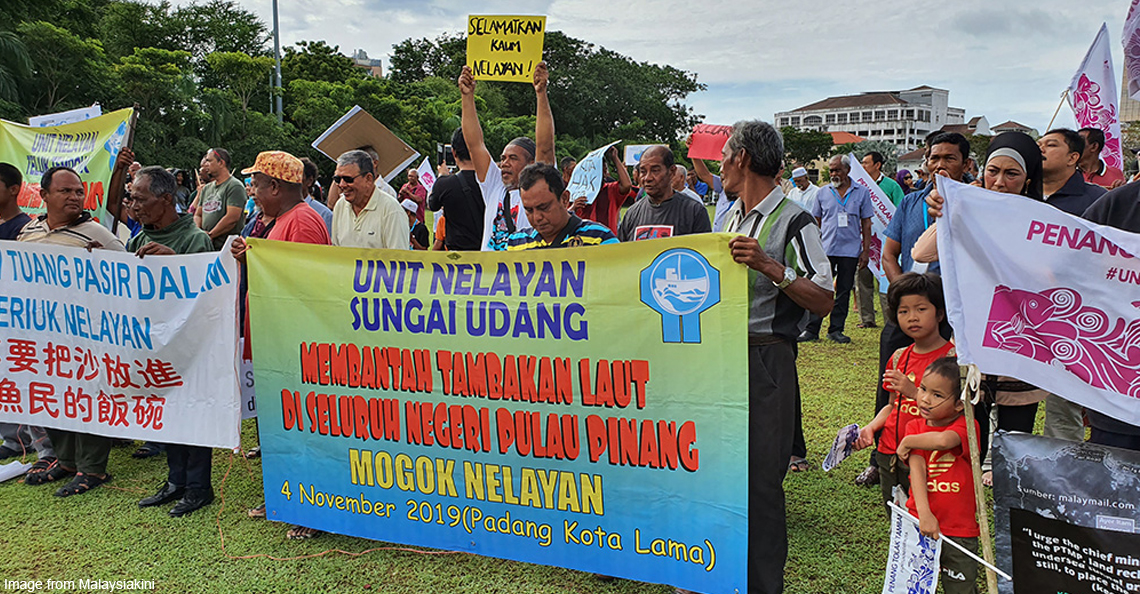
- 1.4KShares
- Facebook1.2K
- Twitter16
- LinkedIn21
- Email27
- WhatsApp86
(This article originally appeared May 2019, but has been updated following recent developments.)
There’s this old saying that we just made up: there are three constants in Singapore – death, taxes, and that there’s probably a land reclamation project going on somewhere in the island.
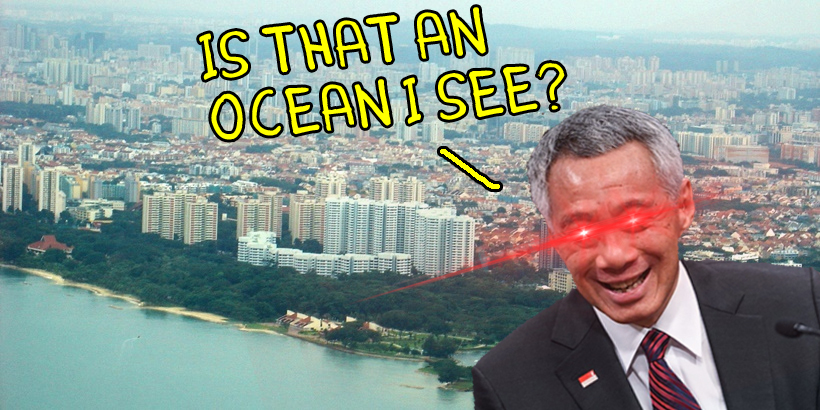
But it appears as tho Malaysia may be joining that club very soon. Recently there’s been quite a bit of hoohaa over Penang’s grand idea of doing land reclamation just south of the island, building not one, not two, but THREE new islands just off the coast of Penang Island itself.
This huge project’s name? The controversial Penang South Reclamation (PSR) plan.
UPDATE [11/7/19]: Hundreds of fishermen from Penang and Perak marched to Parliament today, in a protest against the Penang South Reclamation project. They were there to bring attention to their side of the story, as well as pass on memos to Dr M, Dr Wan Azizah as well as a host of other MPs such as Nurul Izzah and Hassan Karim.
UPDATE[4/11/19]: Yet another protest against the Penang South Reclamation project happened today. At the Esplanade, Penang Speakers Square was full of people this morning, as several hundreds of people turned up to protest the project and to show support for the fishermen who would be affected by the project.
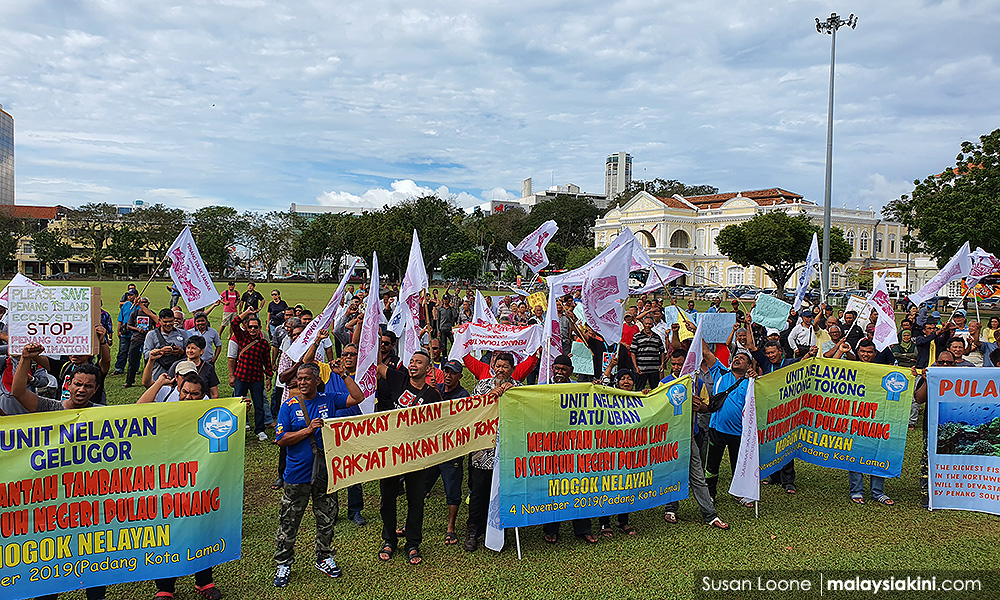
To fully understand why they’re angry tho, let’s take a look at the PSR project first.
Penang wants to make 3 islands and sell it to fund its transport infrastructure

So the Penang Island’s islands began life in 2015 as part of the Penang Transport Master Plan (PTMP). Essentially, the PTMP is this massive project aimed at adding new highways and public transport systems to Penang. But to do so, the Penang govt needs money right? That’s where the Penang South Reclamation project comes in.
The idea is that the govt would first do land reclamation and build up three new islands, totally about 4,500 acres in size. They would then sell off about three quarters of the new islands’ land, and with these funds, the Penang govt can then build all the highways and LRTs that they can think of. Sounds like a simple plan right?

Well… not exactly.
Despite originally being announced in 2015, it had a couple of setbacks before finally having necessary approvals from the Department of Environment and the National Physical Planning Council, subject to the state govt meeting 18 conditions set by the NPPC. In fact, the Penang state govt were already half ready to ask the federal govt to fund the PTMP highways and LRTs, had their plan for building the islands been rejected.
In charge of delivering the reclamation project is the SRS Consortium, a 60:20:20 joint venture between Gamuda, Ideal Property Development Sdn Bhd and Loh Phoy Yen Holdings, with the Penang Development Corporation also having a foot and a half in the project. Budget wise, it was reported in 2018 that the PSR would cost about RM4 billion.
With Penang’s transport plans costing so much, the reclaimed islands should also generate that much, if not more right? Well according to reports, the Penang govt expects to sell off over RM70 billion worth of land once the three new islands are built. How they came to that figure, we dunno la cos we’re not experts, but it seems as tho they expect a minimum selling price of RM200psf, with further appreciation of price in the years to come. With the PMTP’s estimated cost to be around RM46 billion, they hope that the sale of land can more than cover the cost of the transport plan.
The three islands will all have different purposes too:
- Island A: a mostly industrial area
- Island B: a mix of commercial and state admin offices
- Island C: mostly be used for residential buildings.
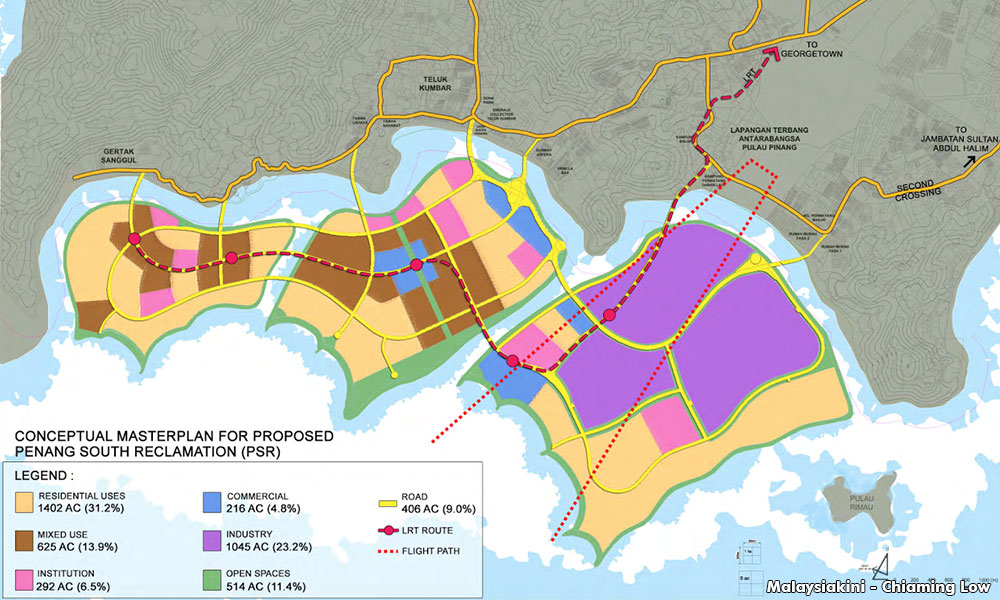
But despite the project’s approval from the federal govt, not everyone is happy with the reclamation plan….
Many are arguing that the new islands will destroy the environment
In the couple of weeks that followed the Penang govt’s announcement that the PSR will be happening, numerous NGOs and Penangites began to voice out their concern. On May 20th, it was reported that 15 NGOs banded up to ask the Penang govt to explore other options instead of the PSR. By May 25th, that figure ballooned to 45 NGO groups, teaming up to send a memo to Dr M’s office, asking for the cancellation of the PSR project. There’s even an online petition doing the rounds online, with almost 30,000 signatories at time of writing.

Some of the reasons for their resistance to the PSR include the obvious environmental concerns, such as the destruction of coastal habitats, addition of 3.2 million tons of carbon emissions, loss of recreational beaches and the contamination of coral near Pulau Kendi. There’s also the claim that the whole PSR and PTMP project has been badly planned in the first place, with the NGOs and petition arguing that the Penang govt has not been transparent about the project nor have they provided good enough reasons to justify the reclamation plan.
They added that not only will the almost 5,000 fishermen in the area be affected by the project, thousands more fishermen in Perak will be also be affected due to the sandmining.
“About 10,000 fishing communities in Penang and Perak will be affected by this project and they are in the B40 group so if the government is really serious about helping the B40 group, why are they destorying their livelihood? PSR is supporting developers, not the B40 or the fishermen,” – Meenakshi Raman, from Penang Consumers’ Association, one of the NGOs protesting the PSR, as quoted by Malay Mail

Now their calls to end the PSR plan might not be without reason. See, the PSR is far from the first time Penang decided to make sandcastles in the sea. In fact, they’ve been doing so since the 1970s, when they reclaimed about 1,000 acres of land. But it’s their most recent land reclamation project that has affected plenty of Penang’s sea life and fishermen.
In 2006, the Seri Tanjung Pinang land reclamation project began. It brought with it plenty of high-rise fancy condos to the Penang coastline, but took away the fish that generations of fishermen before this had depended on.
“Before, there were many fish. Now, nothing,” – Mohd Ishak, Penang fisherman, as quoted by Guardian

With there being such a fine line between developing for the future and conserving the past, is there a way forward for the Penang South Reclamation plan?
Well… we hate to say it… but perhaps we should look at the country known for it.
Singapore’s recent reclamation project is one of the greenest landfills ever
Alright so after reading a bunch of NGOs complain about the possible ecological effects of land reclamation, you might be surprised to know that down south, one of their land reclamation projects is so environmentally friendly, that it’s even open to the public for recreational activities – all while also serving as a landfill!
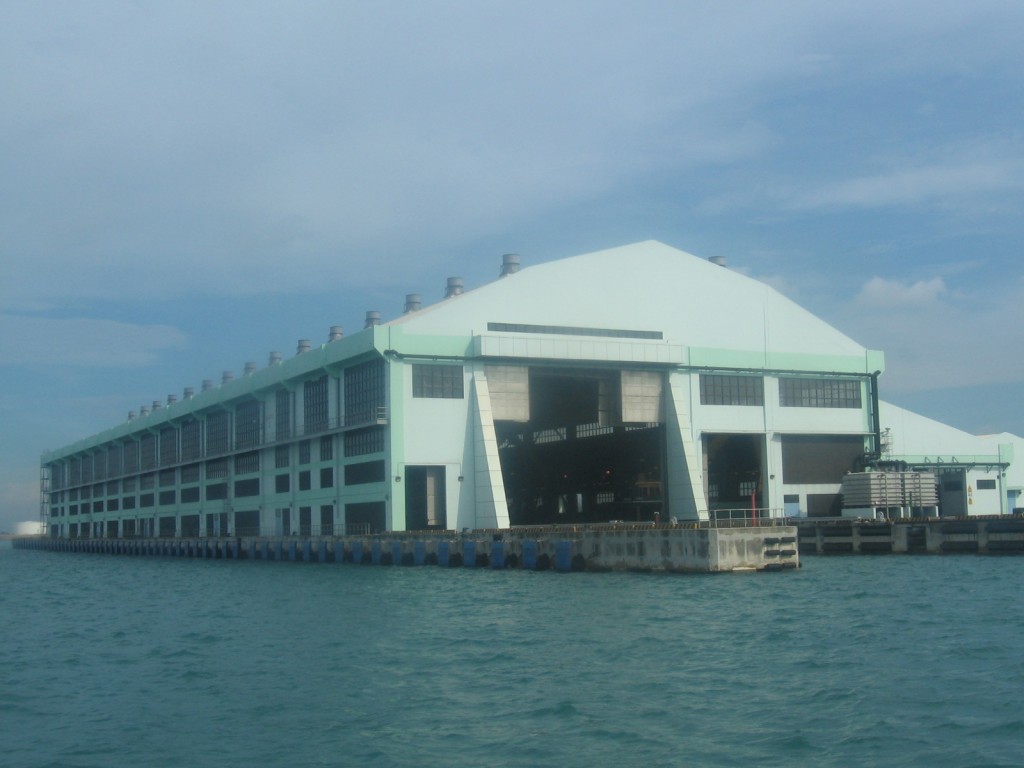
Yes, that’s right. In the 90s, as Singapore was facing a shortage of space for landfills, its expertise in land reclamation came in handy while it tried to find a solution that would help alleviate it’s trash problems while preserving the nature. They came up with an idea: build an offshore landfill by reclaiming the land between Pulau Semakau and Pulau Sakeng, turning it into landfill.
In designing the new ‘isle of trash’, engineers, academics and contractors all teamed up to form perhaps the most innovative solution yet to keeping trash on the landfill and not into the sea. They did so by building a 7km perimeter around the new merged island, built with impermeable membranes, clay and rock. This super thick layer of stuff keeps all the trash and contaminants within the landfill, while any contaminated water would be treated by a plant on the island.
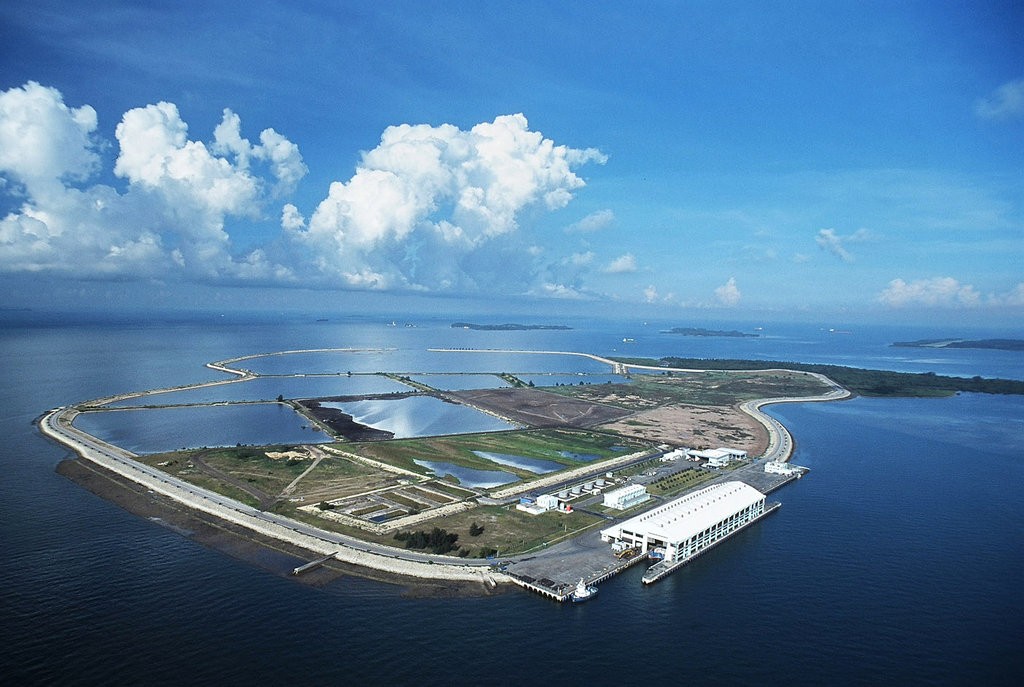
On top of that, the area had plenty of coral reefs nearby too. The Singaporeans would take note of that, constructing screens around the corals and seagrass to protect the sealife during construction. They also incinerated the trash and compacted it into landfill cells and pumped in sea water, which was later covered with soil, sowing the seeds for grass and trees to grow – literally. The Semakau Landfill would be so green that the Singaporean authorities even allowed for members of the public to visit the place for recreational activities.
“Besides being a clean and odour-free landfill, Semakau also harbours flourishing natural ecosystems like mangroves, seagrass meadows, and coral reefs, as well as rich biodiversity from sea stars to herons,” – Grace Chua, editor of Centre for Livable Cities
You could perhaps now understand why Semakau has been called by New Scientist, the ‘Garbage of Eden’.
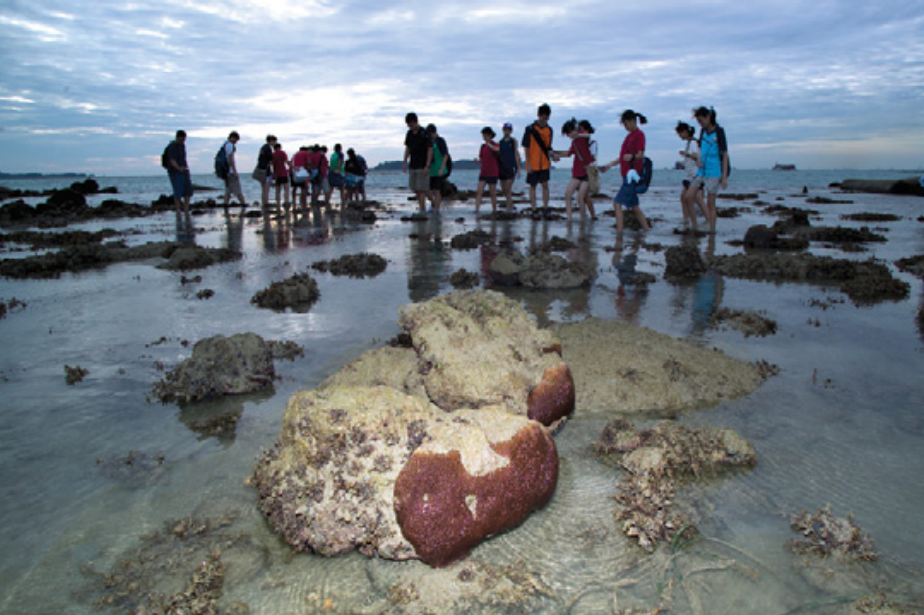
Now the point here isn’t to say that Singapore’s better than us, but rather to emphasise that a cleaner, greener approach to land reclamation can be done, which can save and nurture the sealife around. Meanwhile, for us, we’re going to need to keep treading that fine balance between development and conserving nature, and hopefully never lean away from one of them too much.
Is it too much to ask for both?

- 1.4KShares
- Facebook1.2K
- Twitter16
- LinkedIn21
- Email27
- WhatsApp86



